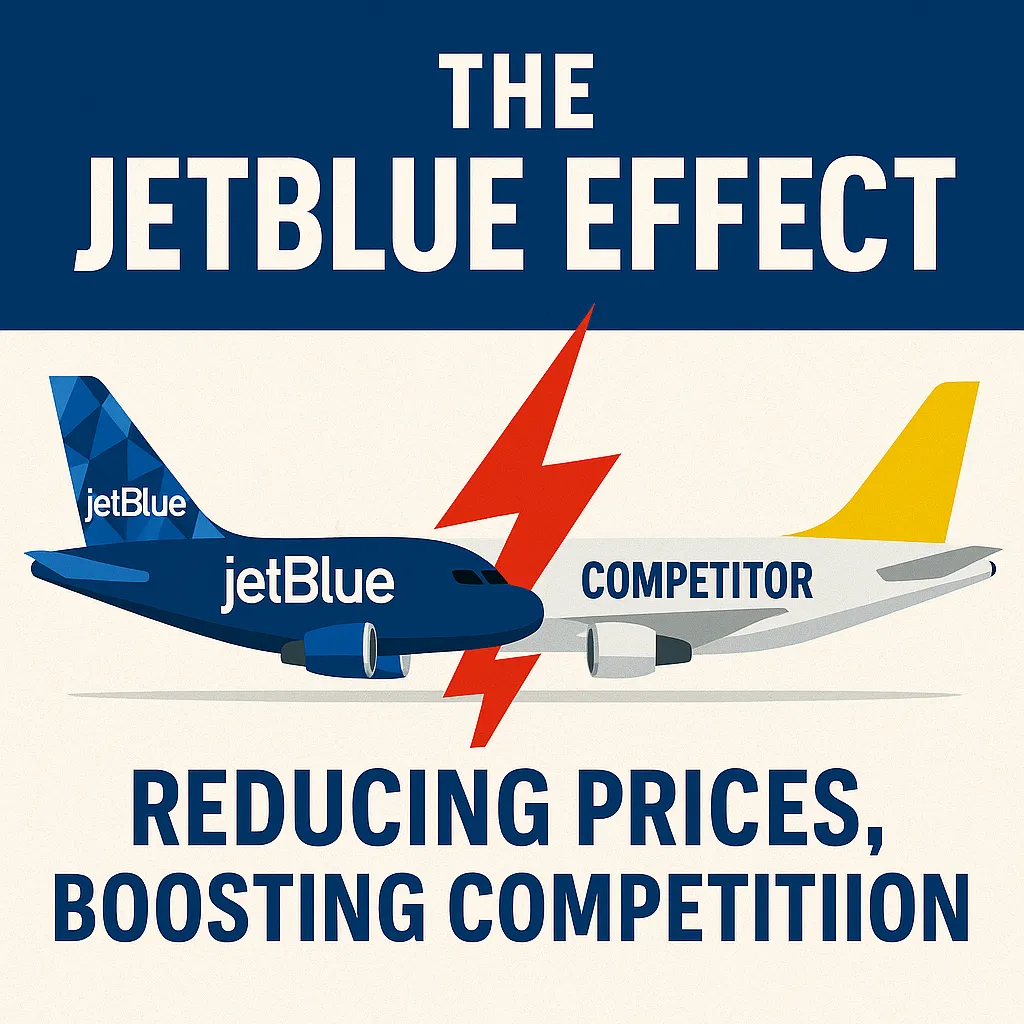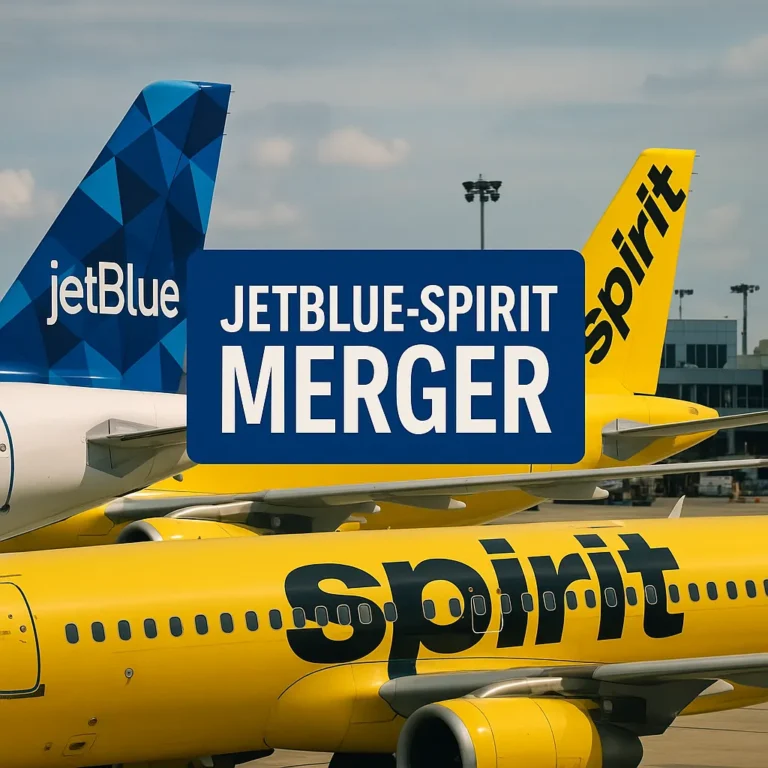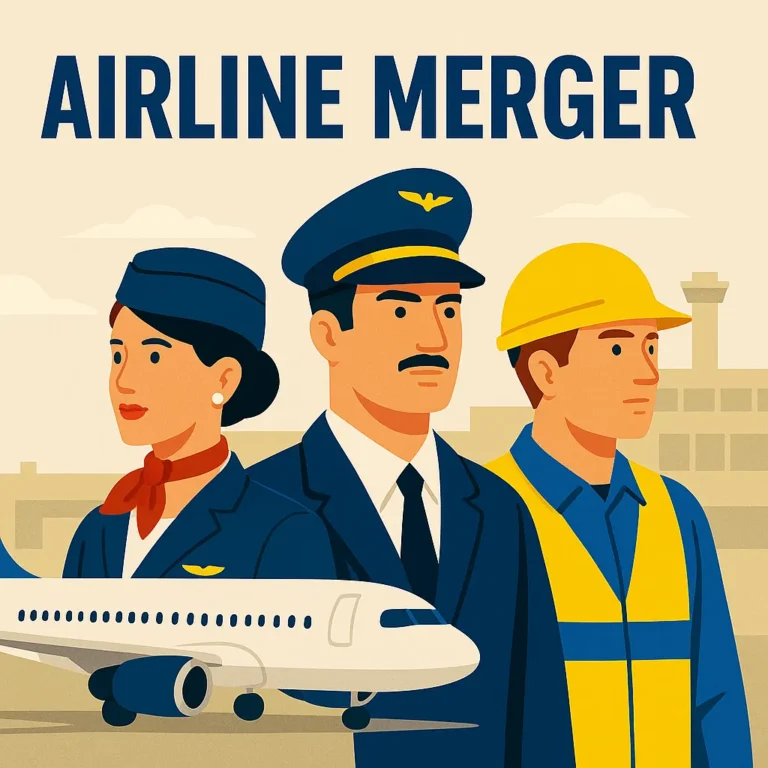When a new airline steps onto a route, something interesting tends to happen—prices drop. That’s no coincidence. The recent JetBlue–Spirit merger is more than a corporate power move; it’s the creation of a fresh force in U.S. aviation, one capable of reshaping competition across dozens of routes simultaneously.
This new airline presence brings a powerful ripple effect: fewer monopolies, more choices, and cheaper fares for everyday travelers.
There’s even a name for this phenomenon—the JetBlue Effect. Let’s unpack what that means and why it’s changing how America flies.
What Is the JetBlue Effect?
The JetBlue Effect is a well-documented trend: airfares drop noticeably on routes where JetBlue starts operating. This isn’t marketing hype—it’s backed by numbers and market behavior.
When JetBlue enters a market:
- Average ticket prices fall by 17–30%.
- Competing airlines often upgrade their service to stay competitive.
- Passenger volume increases as flying becomes more affordable.
In short, the benefits don’t just go to JetBlue passengers—everyone on the route wins.
A Merged Airline, A Changed Market Structure
The new combined airline isn’t just bigger. It shifts the balance of power across regional and national air travel.
Here’s how:
- Reduced monopolies: Many smaller routes have been dominated by one or two carriers. A new player disrupts this long-standing pricing inertia.
- Higher capacity: More seats, more flights—this forces airlines to compete for passengers instead of locking them into expensive options.
- Service pressure on competitors: JetBlue’s reputation for generous legroom, free onboard Wi-Fi, and in-seat entertainment has pushed even low-cost rivals to raise their standards.
This isn’t just about price wars—it’s a complete rewrite of customer expectations.
Real Price Drops After JetBlue Enters the Market
Need proof? Let’s look at actual pricing shifts before and after JetBlue began servicing key routes:
| Route | Average Fare Before | After JetBlue Entry | Drop (%) |
|---|---|---|---|
| New York – Fort Lauderdale | $198 | $145 | −27% |
| Boston – Washington | $172 | $128 | −25% |
| Orlando – Newark | $186 | $134 | −28% |
These figures are based on publicly available aviation data, analyzing round-trip ticket prices. The numbers show just how powerful a competitive presence can be in shaking up route dynamics.
Benefits Go Beyond Just Lower Prices
While fare cuts get most of the headlines, the JetBlue–Spirit merger offers wider passenger gains:
- More mid-size cities connected: Fewer so-called “dead zones” where flights were limited or expensive.
- Less dependence on major hubs: Travelers can skip long layovers and get from point A to B faster.
- New off-season routes: These encourage local tourism and make year-round travel more appealing.
The merger doesn’t just change prices—it alters travel patterns entirely.
Does a Merger Always Reduce Competition? Not Here.
Regulators typically view airline mergers with caution, fearing less competition and rising fares. But this situation is different.
Rather than shrinking the competitive pool, this merger builds a strong challenger to the Big Four—Delta, American, United, and Southwest.
Here’s what that means:
- Competition gets stronger, not weaker.
- Major carriers now face pricing pressure where they once had dominance.
- The industry gains a new dynamic that favors customer choice, not corporate control.
In short, this merger challenges the status quo—and that’s good news for passengers.



